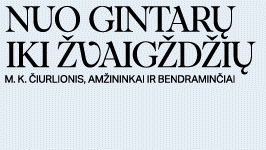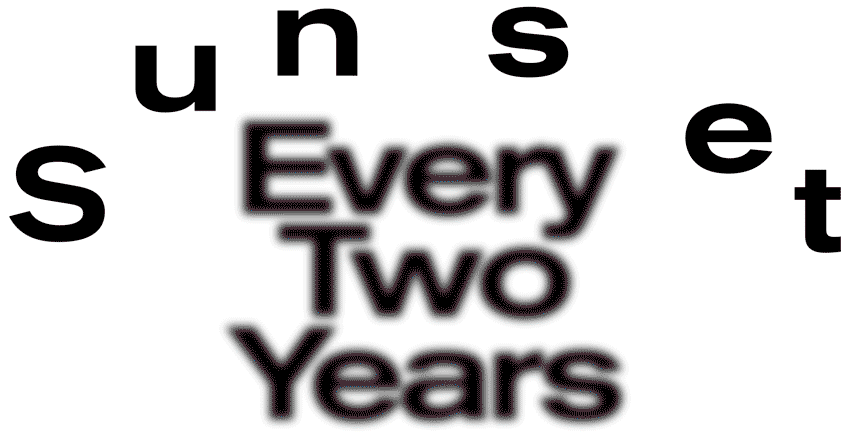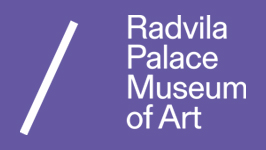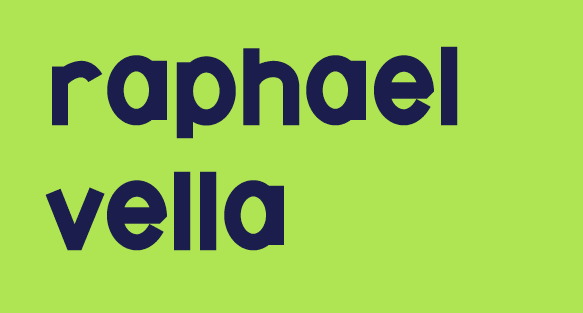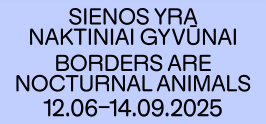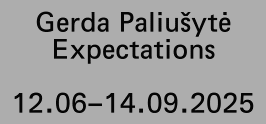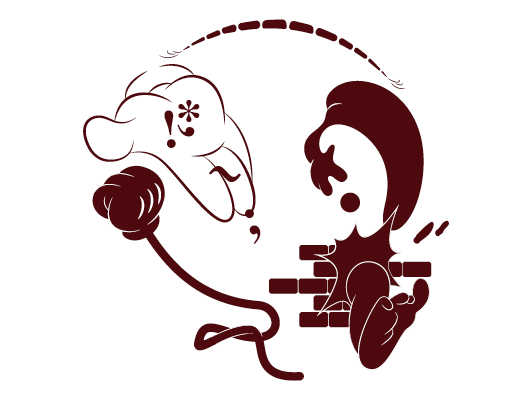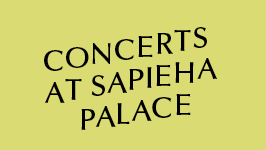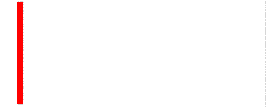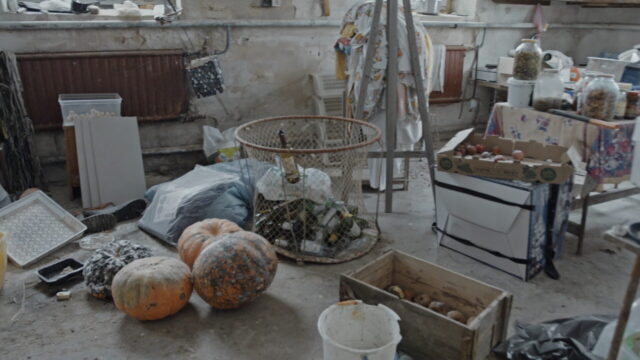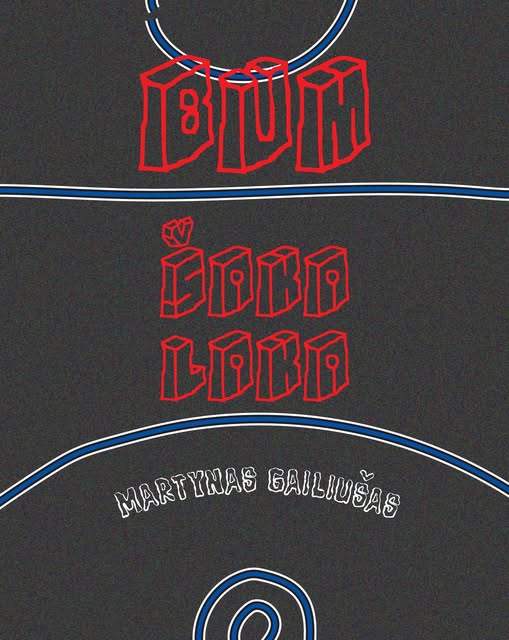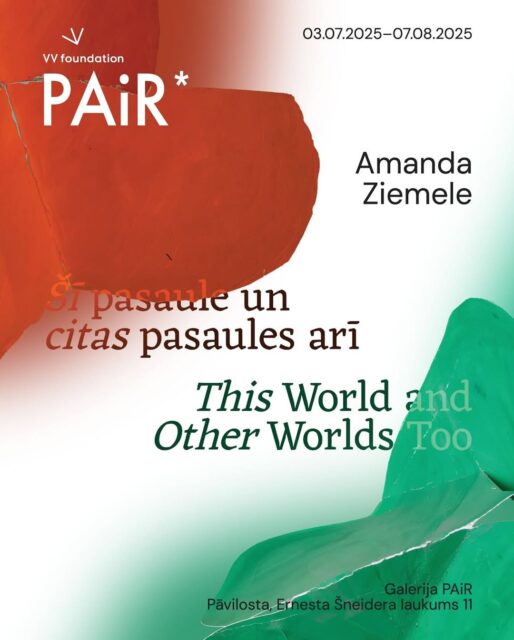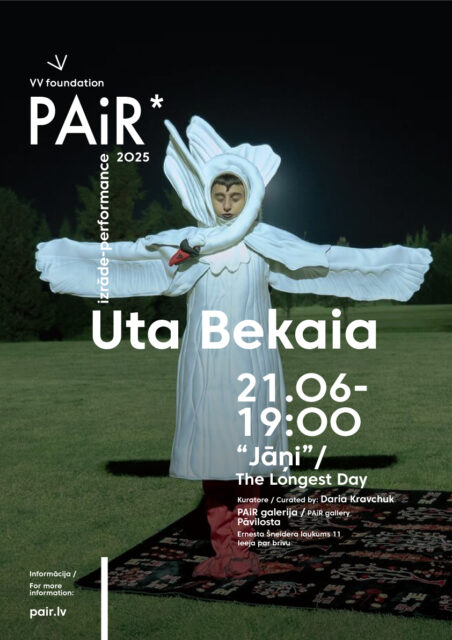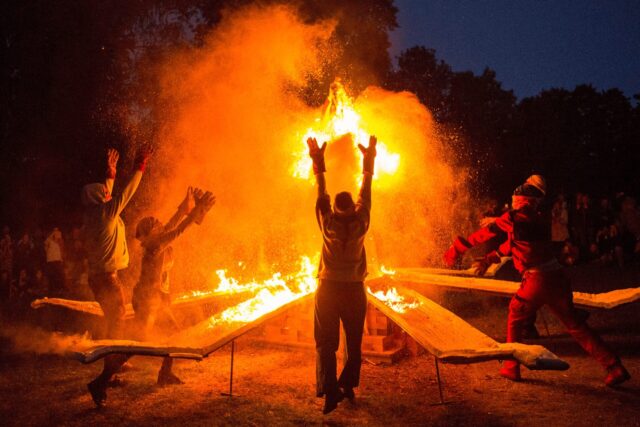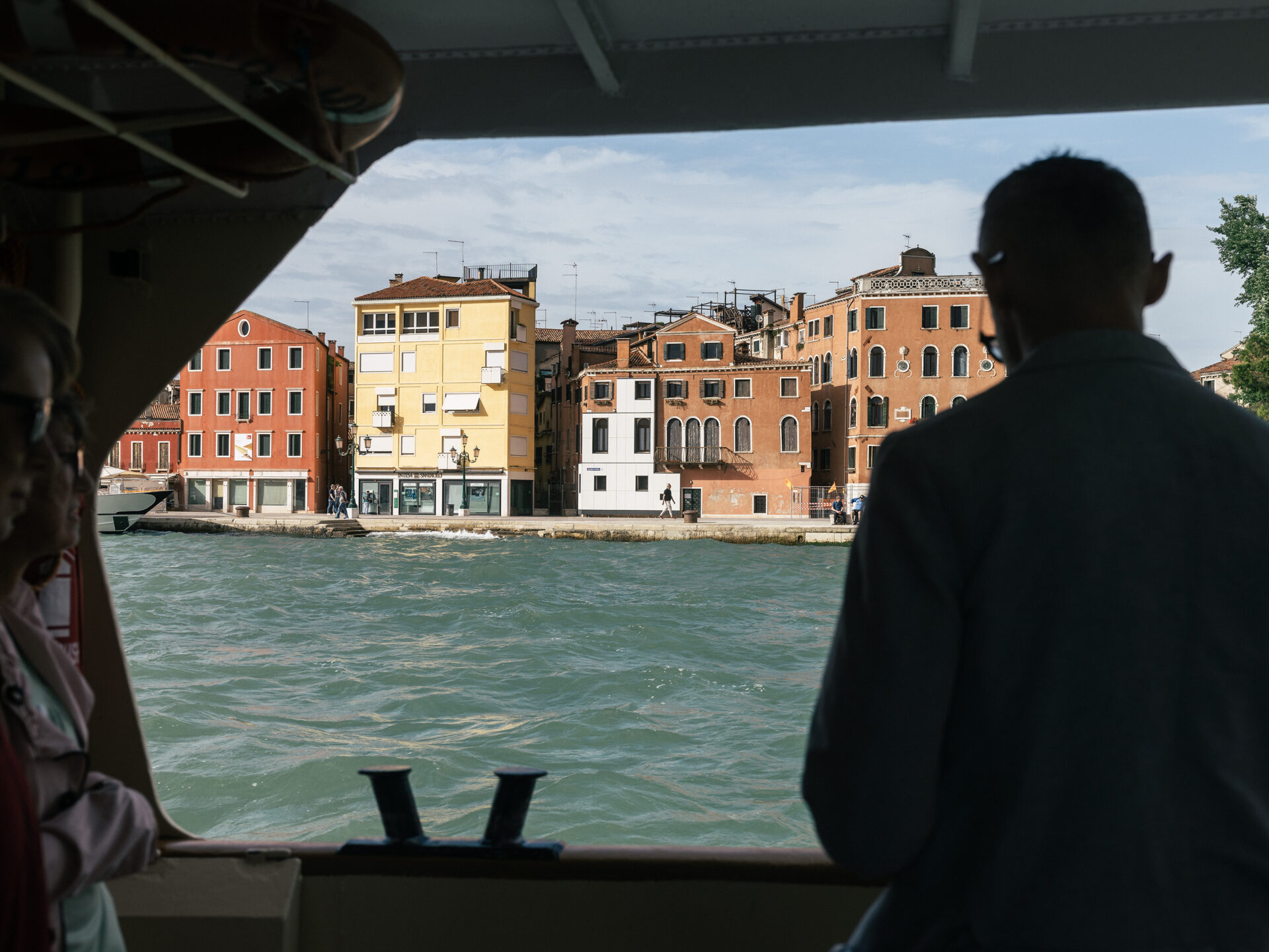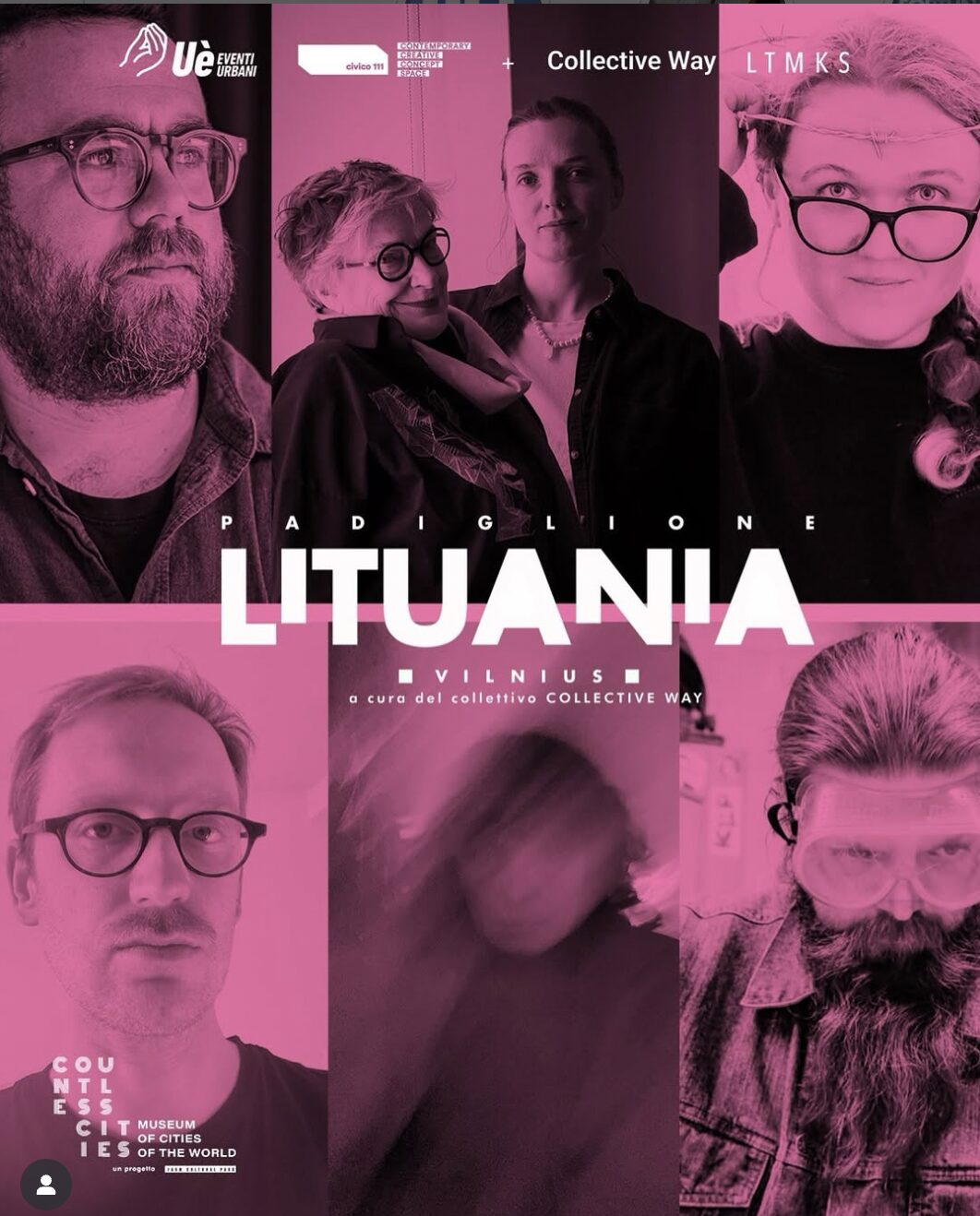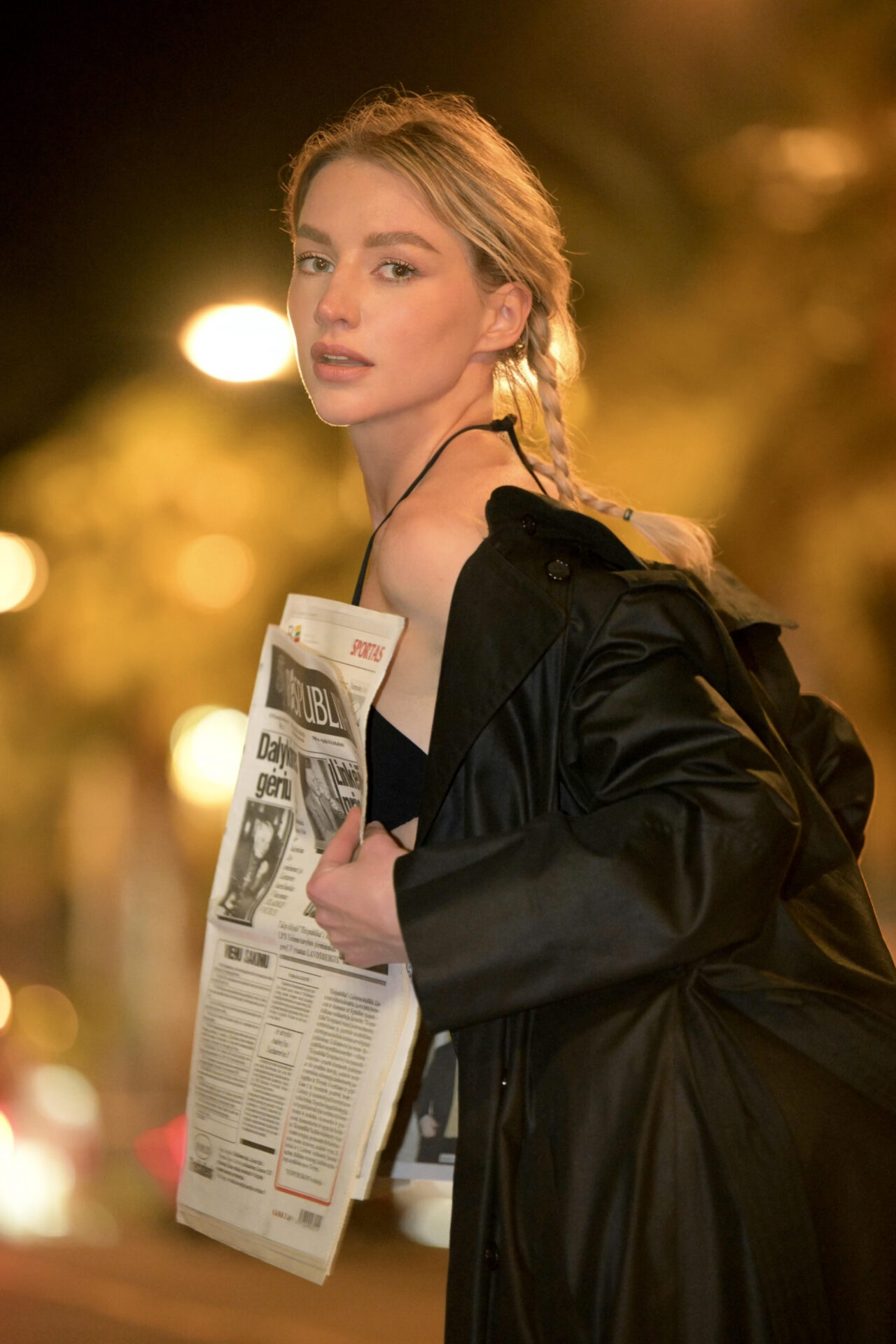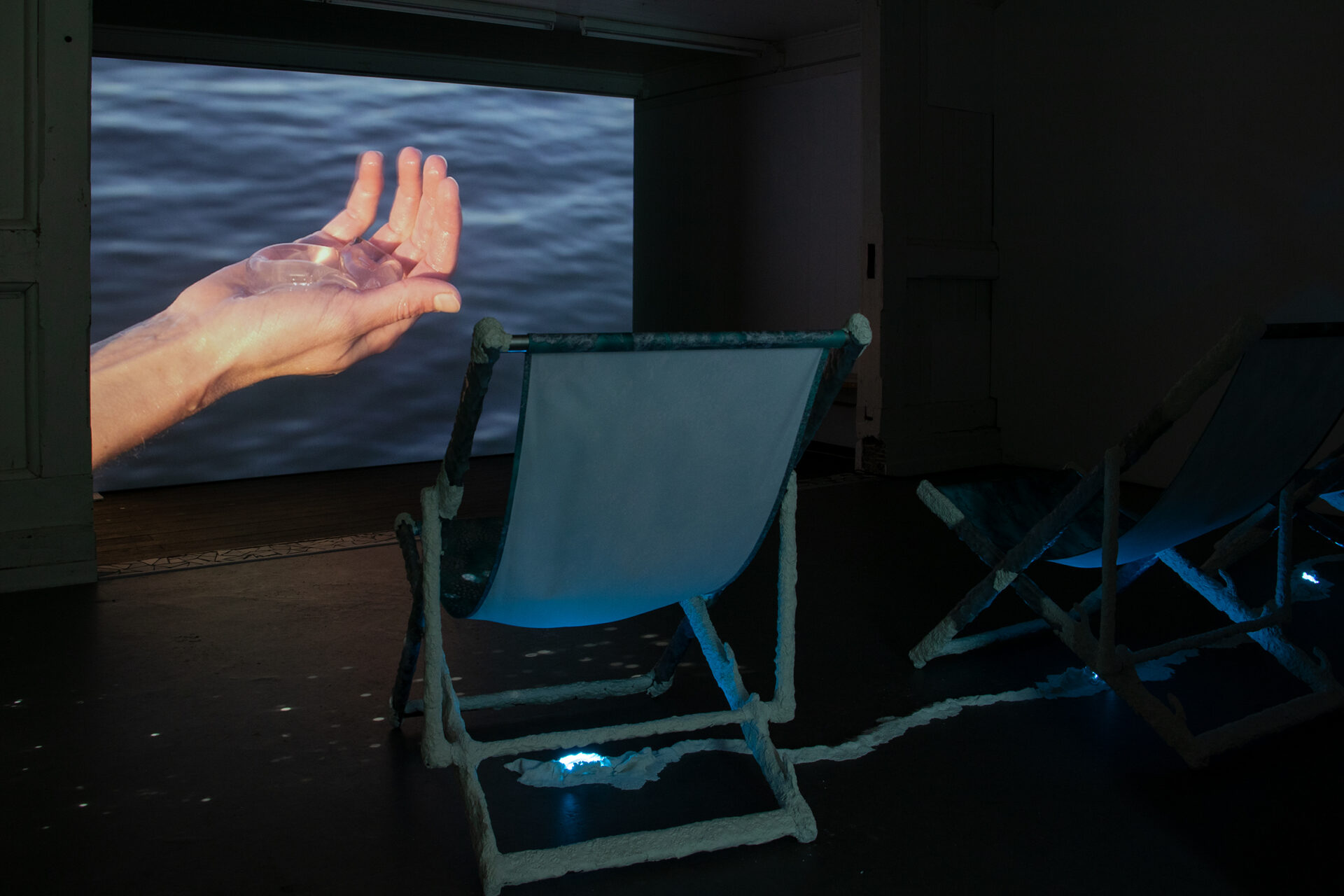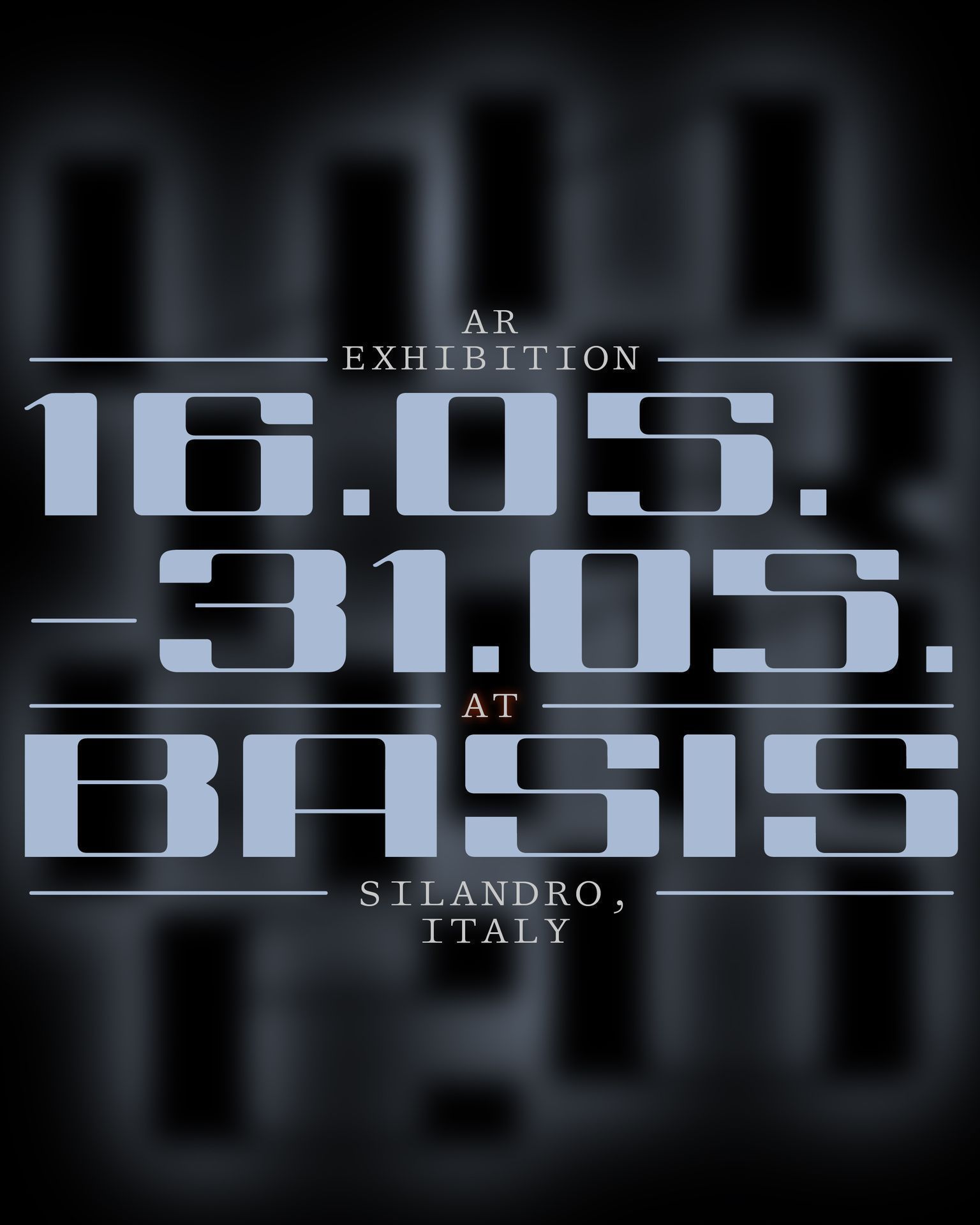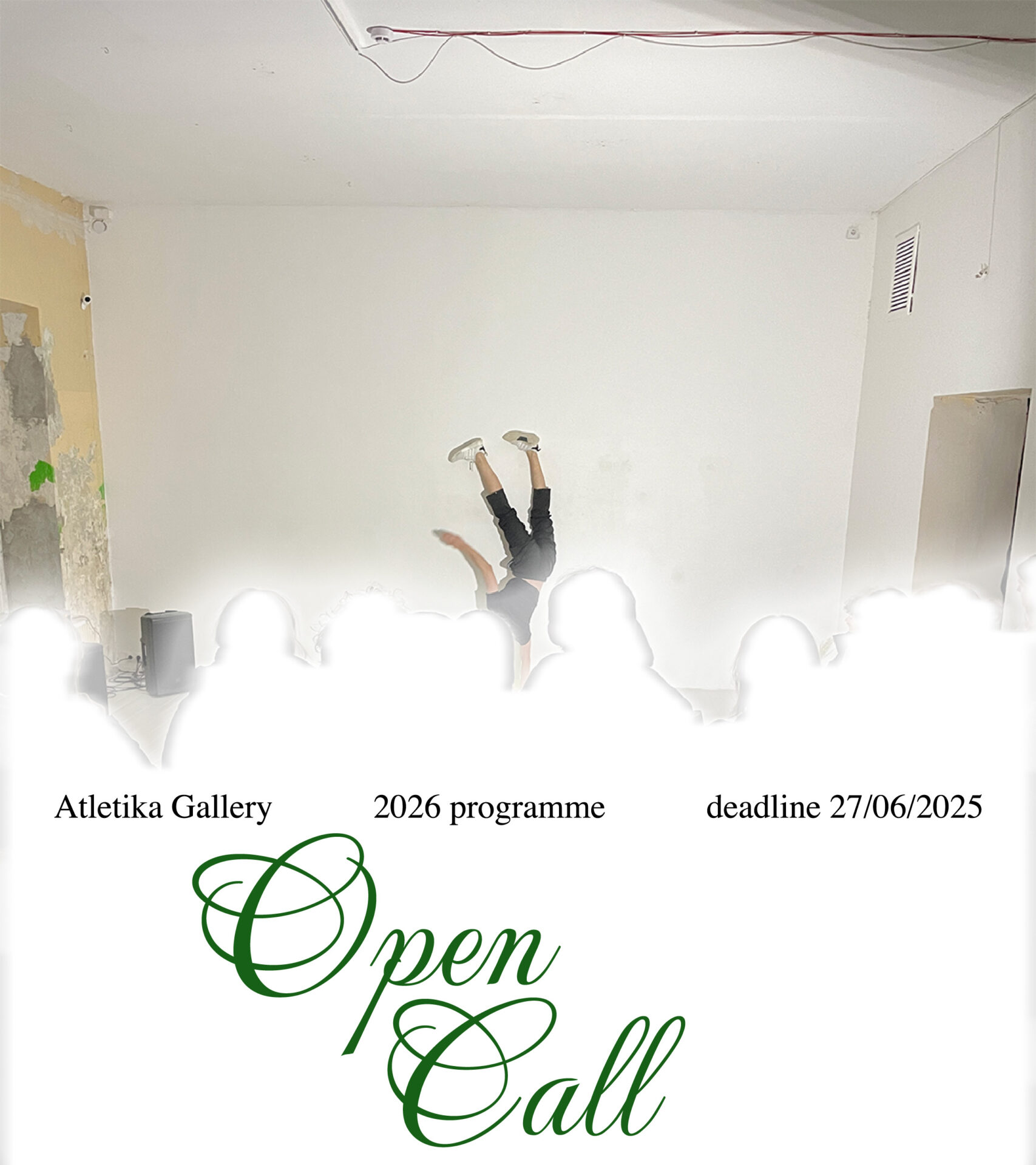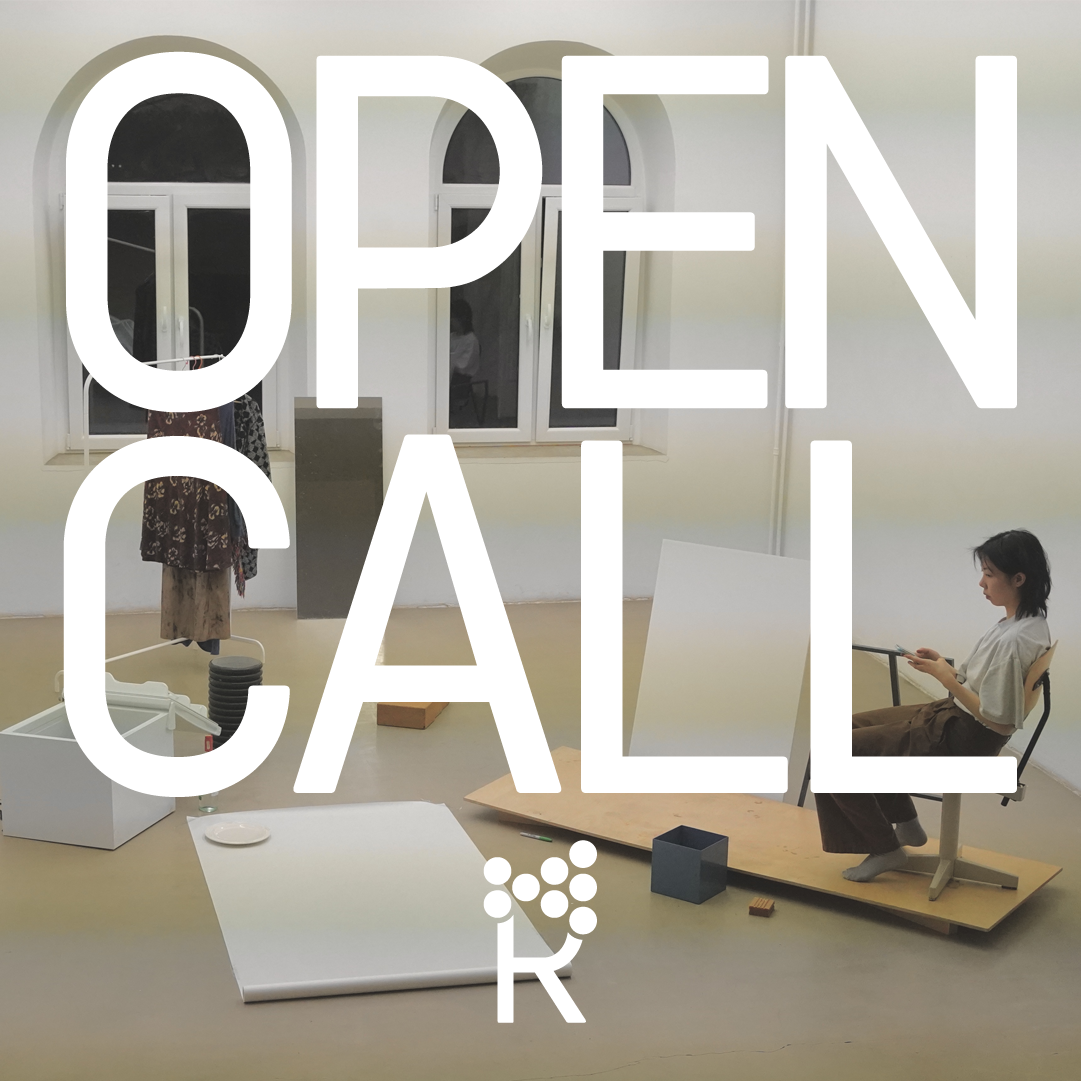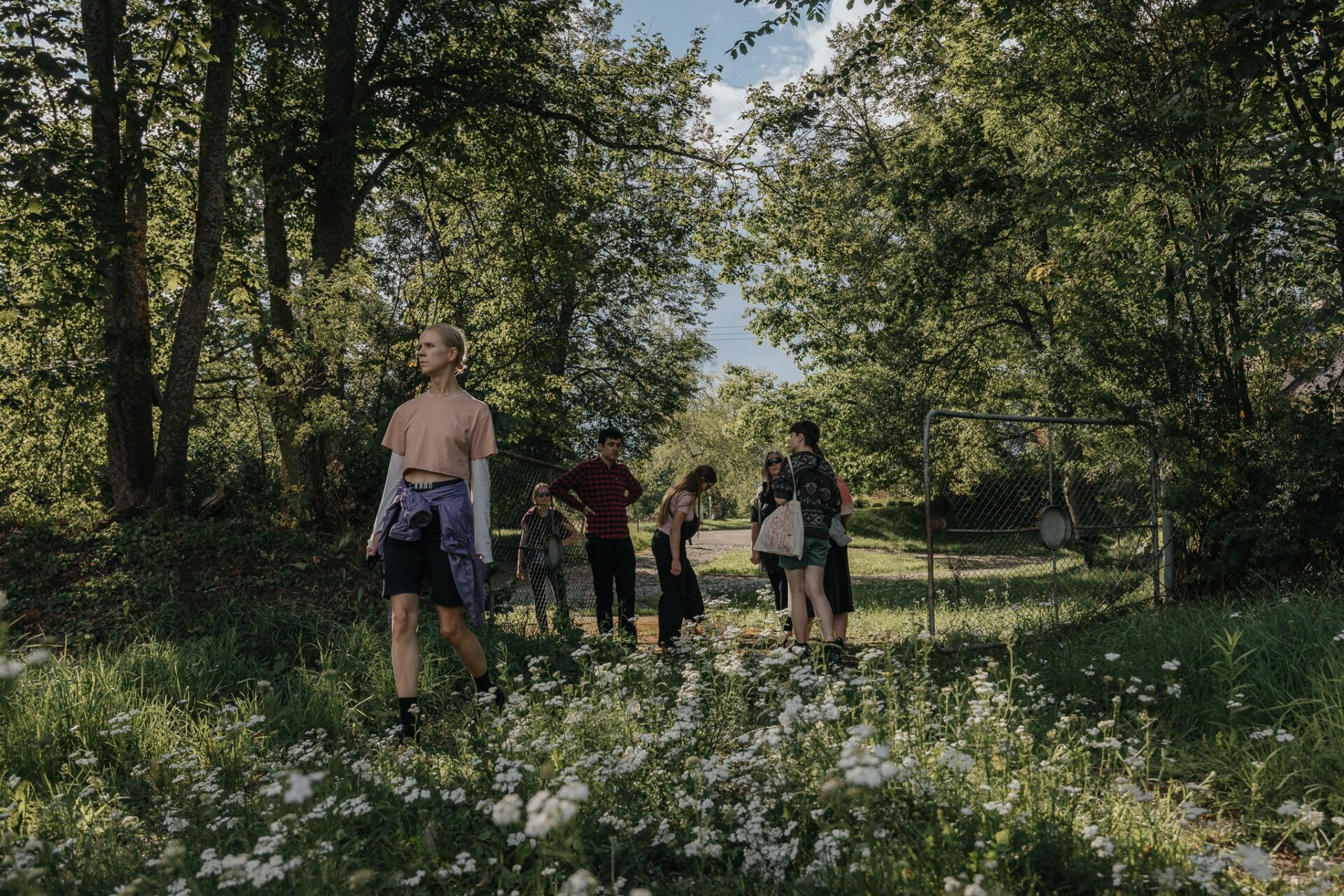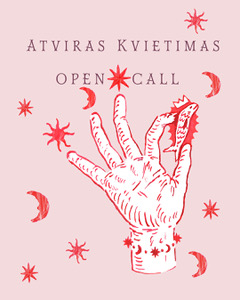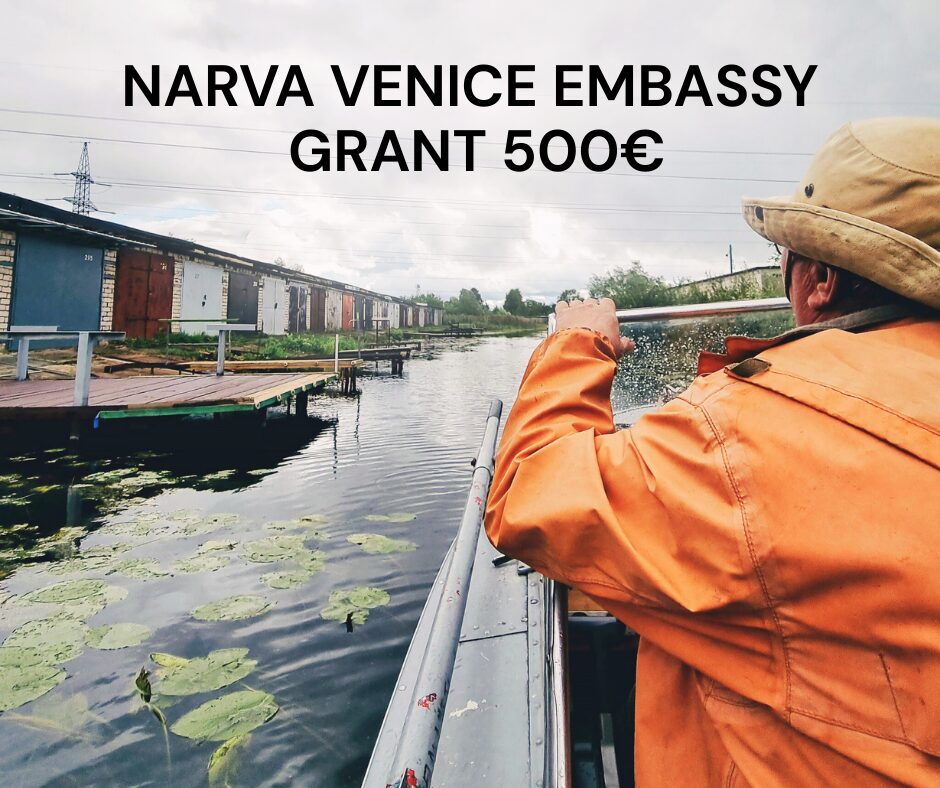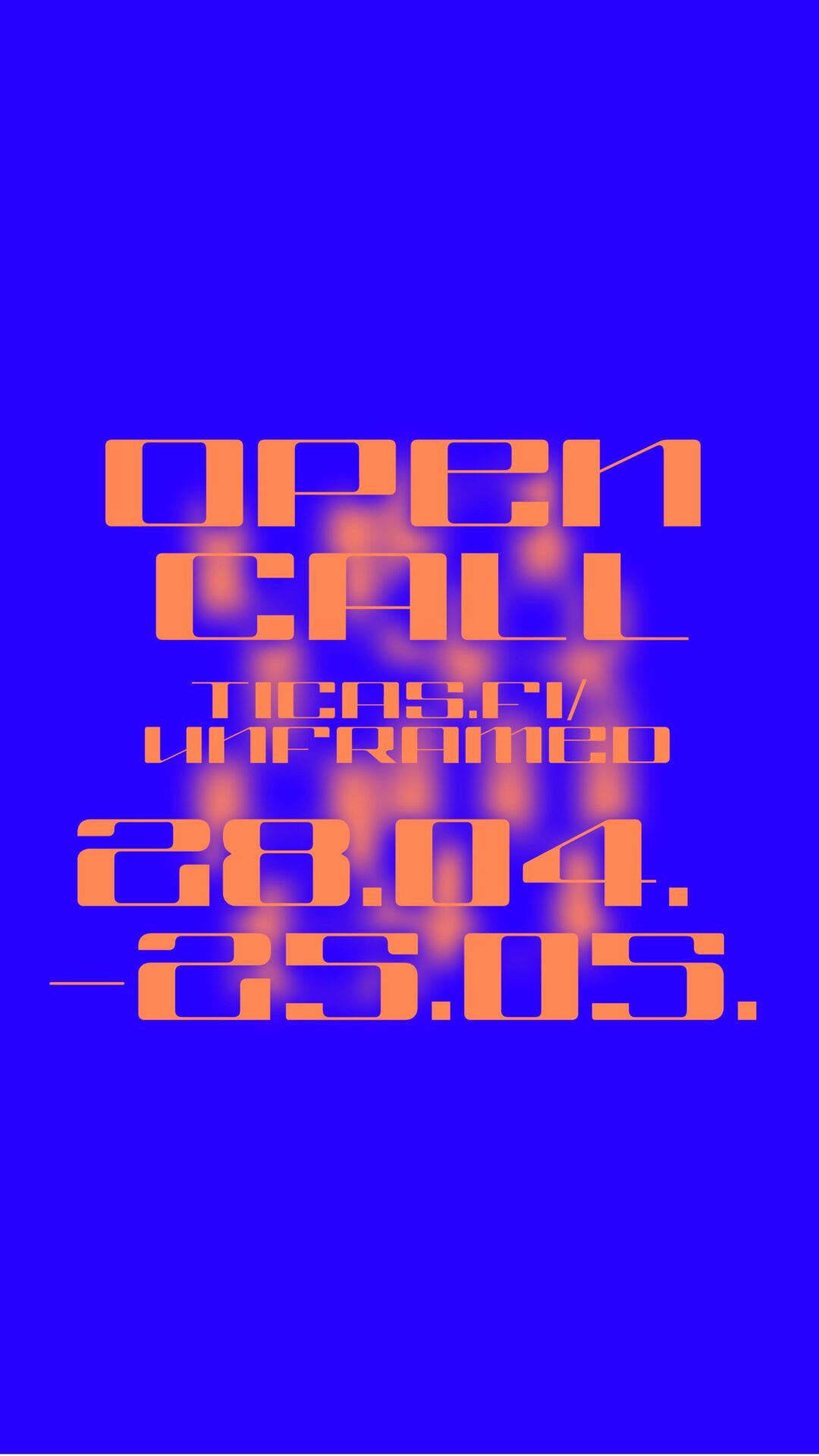I don’t remember ever visiting the monster’s belly before, but it happened a few weeks ago in Swallow. Anastasia Sosunova welcomed me at the hellmouth to the exhibition, and invited me for a stroll. A couple of days later, I read Anastasia’s notes (Express Method), which shrouded everything in the veil of household magic and the phenomenon of a safe neighbourhood, and opened up a whole new gate of the exhibition experience.
Hellmouth was a favourite prop of Medieval theatre, intimidating the audience with hell-flames, performing a kind of sorting function. It’s interesting that those gates in Anastasia’s exhibition were from used JCDecaux advertising awnings (just remade in a way that doesn’t remind you of any promising story). I’m also curious how the system of safe neighbourhood works here. Anastasia mentions in her publication that when installing an exhibition, she feels as if she’s setting up a home: evaluating the exhibition’s view not from the entrance perspective, but from the deepest corner of the room. As if to ensure that the objects in the exhibition are cosy and not feeling vulnerable. However, the objects of Diluvial Valleys are in the creature’s belly already, and I am not entirely sure which side of the jaws is safer.
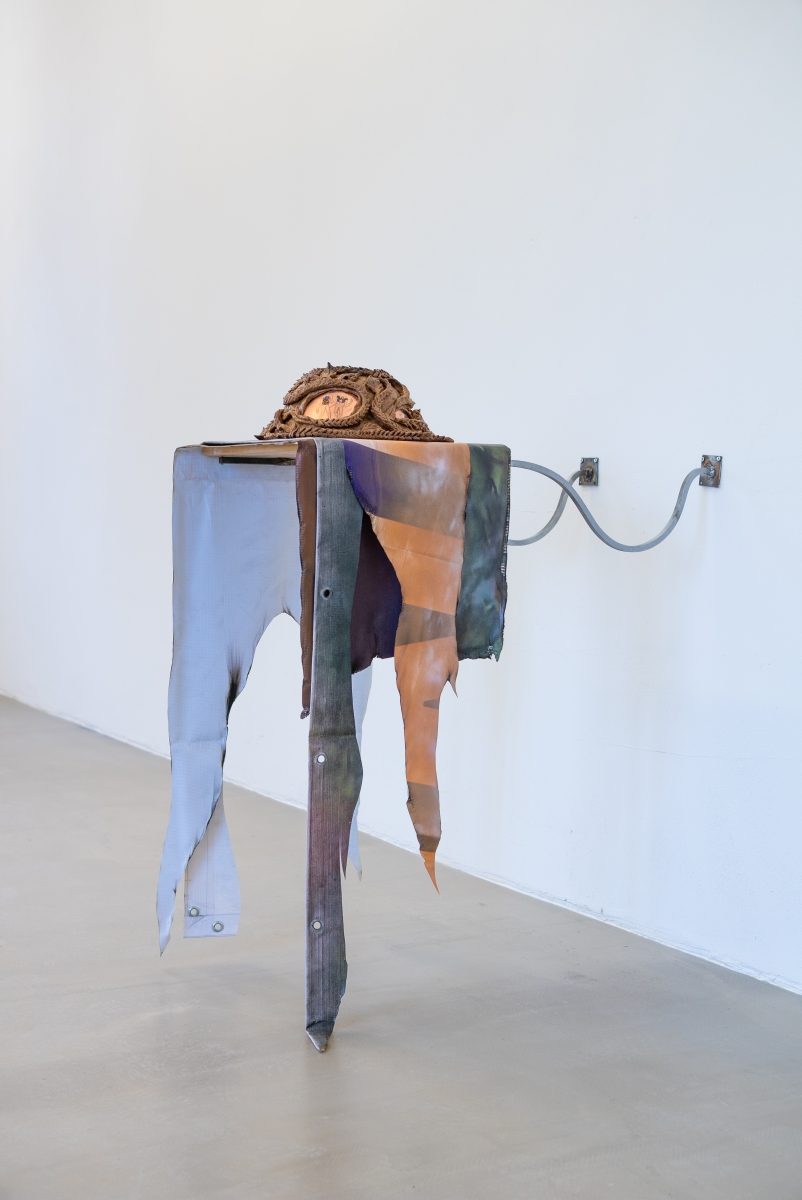
Anastasia Sosunova, Passage pie, 2021. Rye flour, saline, salt, epoxy resin, copper, stickers, spray paint, vinyl banner
When talking about Passage Pie, Anastasia mentioned initiation rituals that are usually compared with being swallowed by a monster. It is a procedure full of challenges and suffering, after which you start a new, fundamentally changed stage of life: you find your place. You behave similarly when you’re a newcomer and want to make friends with your neighbours, or you’re an old wolf of the area, checking every new soul that enters your estates. After completing all the symbolically codified actions, both sides feel clear, chewed up, a little torn perhaps, but able to return to their safe bearings, which will not be disturbed by any odd creature.
I became interested in a story I read in Express Method. It was about Bendorėliai, located in the suburbs of Vilnius. It is a place based on the American suburban neighbourhood model. At the gate, supervised by Cerberus, it is made clear: residents to the left, guests to the right; no aimless wanderers, and the raised boom barrier for the newcomer is probably equivalent to a pass to Elysian Fields. Sounds idyllic. Walking around the exhibition, I wondered how this safe neighbourhood model would work in art environments. don’t
When I reach the fenced area of the apartment building announcing that no outsiders are allowed, the dogs are angry and it is only safe behind the fence, and I immediately visualise the community located there. They should all be similar, and have one thing in common. Maybe they wear clothes only of the same brand? Or maybe they don’t wear anything at all. Maybe they place furniture in exactly the same locations as in the Russian Eighties film Office Romance, which is still shown annually on New Year’s Eve. In any case, the main player here is the coding action analysed in Express Method, in therapeutic, ritual and visual code terms. When it comes to the field of art, the latter seems to be the most relevant.
Diluvial Valleys is a great place to think about dizziness. For example, you find yourself in a room on the other side of the world, and everything looks familiar in it; or you’re listening to a song for the first time, and realise that you already know all the words. Thus, I feel safe in the Valley (not forgetting that I’m swallowed), no matter how mysterious it may be. Monsters sometimes become neighbours, and without feeling it we begin to say hello.
After walking around the show, I find myself near a salt dough pie again, from which characters from the Nuremberg Chronicles, with skull stickers instead of faces, stare at me. I wonder if such an active cake baking boom in the art field has anything to do with a pandemic lockdown? Or mounting foam objects: with anxiety attacks after staying at home for too long? Perhaps this is a common feature, a visual code, a tattoo, marking the communities located in art islands? I send these bothersome questions to Anastasia.
AS: Visual repetitions, like all other subcultural aesthetics, emerge as a way to define the group you belong to and separate yourself from ones you don’t want to deal with. It has to do with the dictionary I use in Express Method: with visual and other codes, relic relations, neighbourhood models. Contemporary art is also a kind of neighbourhood with the codes that shape it. The trendiness you mention as a phenomenon seems like an infinitely addictive rippling on the surface of public life, sometimes the very first to give away that something is slowly and surely forming in the depths of the collective subconscious. I like referring to trends and exploring them. I usually choose some kind of hot material, because they have a certain charge behind the outlines of the contemporary art scene, not inside it. For example, in 2020 the mounting foam trend circulated in the stream of ‘Tiktok DIY’ interiors, and it reflected the younger generation’s resistance to the aesthetics of minimalism. It also showed the need for cheap ways of decorating during the pandemic. It transfers into my work as well, where I consciously collect the means of self-expression of my environment, generation and time. On the other hand, the tattoo stickers I find in kiosk chewing gum, whose graphic motifs have remained unchanged since the 2000s, or sumptuous provincial pastries, for me are time capsules, a way to make a very intimate, familiar connection with images and materials, a return to childhood situations, and an attempt to reevaluate them, to discover the political messages that hide behind them. The fact that somewhere it’s involved with the universal bread-baking craze is even more interesting! I have to admit, I’m getting a little tired of ‘timeless’ art. This kind of thinking is elitist, because when you step outside the comfort zone of the ‘current’, you often step into the zone of an established canon, and as a young artist I’m trying to find my authentic voice ‘as I go’, sometimes with many mistakes and repetitions. But still, visual art is a work with visual codes, where absolutely everything has its charge; and I’m curious to explore why it doesn’t feel bad to me to be like someone else, or to be ‘just like other girls’, to talk sincerely about things that are happening around me and to me, about expressions and ways that linger in the air.
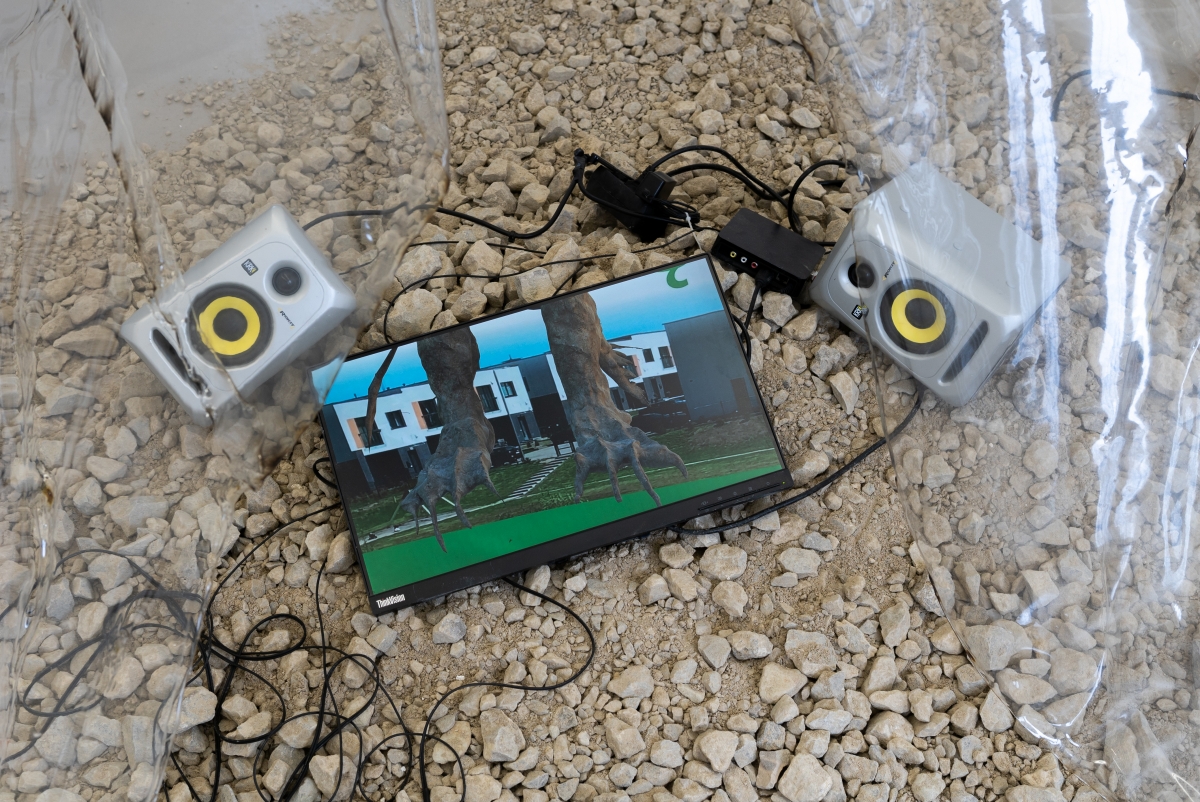
Anastasia Sosunova, When all this is over, let’s meet up, 2021. Video, 10’25’’
As I read the answer, I remembered a supernatural phenomenon that once caught my eye. Its habitat is the open ocean, and the name, translated into English, would mean ‘a clam breath tower’, or a mirage. It is seen only by sailors who are far from the shore, in the form of distant, fantastic cities with tall towers and giant pagodas. Those who chase these fantastic cities never reach them: no matter how far they travel, the cities remain rippling on the horizon. I could just leave it there, without trying to decipher my association: that would probably end the imagination’s journey, just like the explained joke kills laughter. Maybe that’s one of the ripple’s charms? I am talking about Anastasia’s strategy to use hot material in her work, which originates from outside the contemporary art scene, from the shores of Tiktok. It’s so shimmering and radiant, engaging and predatory that it truly resembles a mollusc. Of course, the mermaid song playing in the exhibition, intertwined with the interpretation of Beyoncé’s Halo, has an impact.
Residents of Diluvial Valleys don’t seem to be hiding their footprints (or tails) at all: they come from worlds we already know, where monsters taste people, and people swallow burning swords; where mounting foam masks colonialist ideas, and in the distance the islands ripple, full of art communities and tattoo stickers.
I am writing this text after getting out of the monster’s mouth. The things I saw inside its belly have already turned into mute ghosts, probably travelling to other spaces. But I remember Anastasia’s stories clearly, especially about a white sock she once received as a gift. It turns out, it’s a third-degree relic! Or about many-headed dogs that are very close to her … Guides who know how to tell stories can make even the most ordinary things look strange, and repetition turns into icing on the cake. A whole different feeling.
Photo documentation from ‘Diluvial Valleys’ by Anastasia Sosunova at Swallow.

